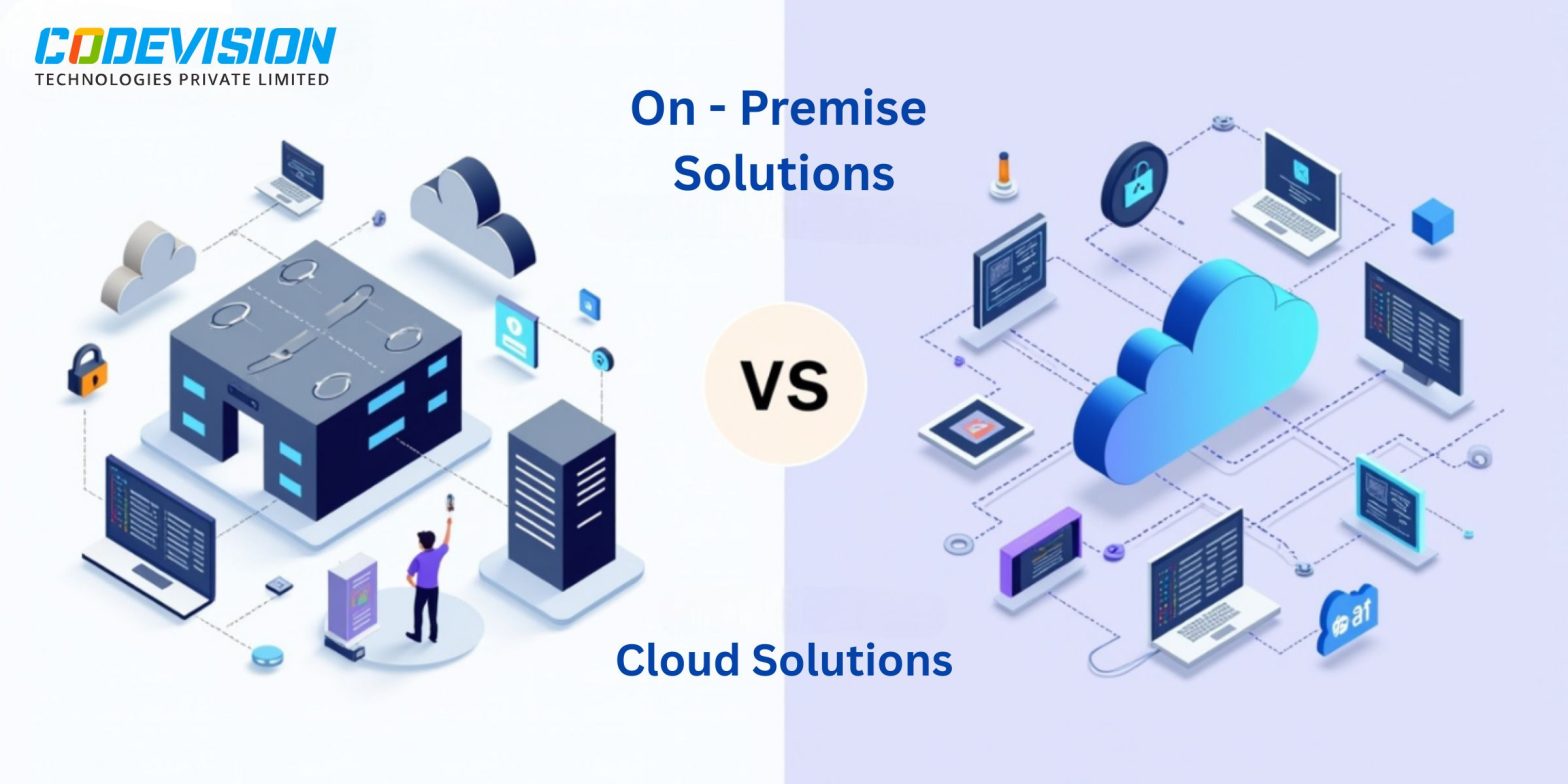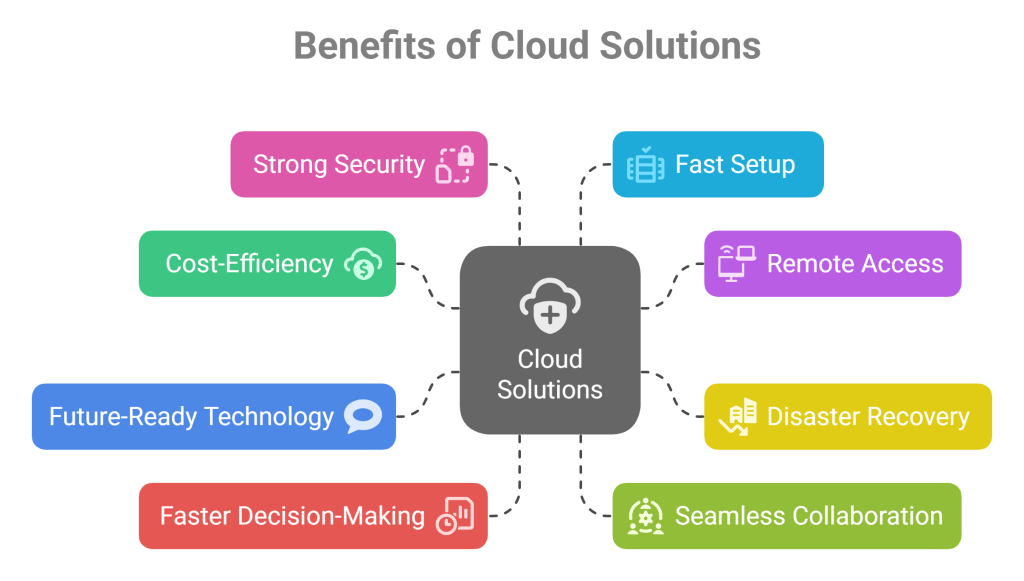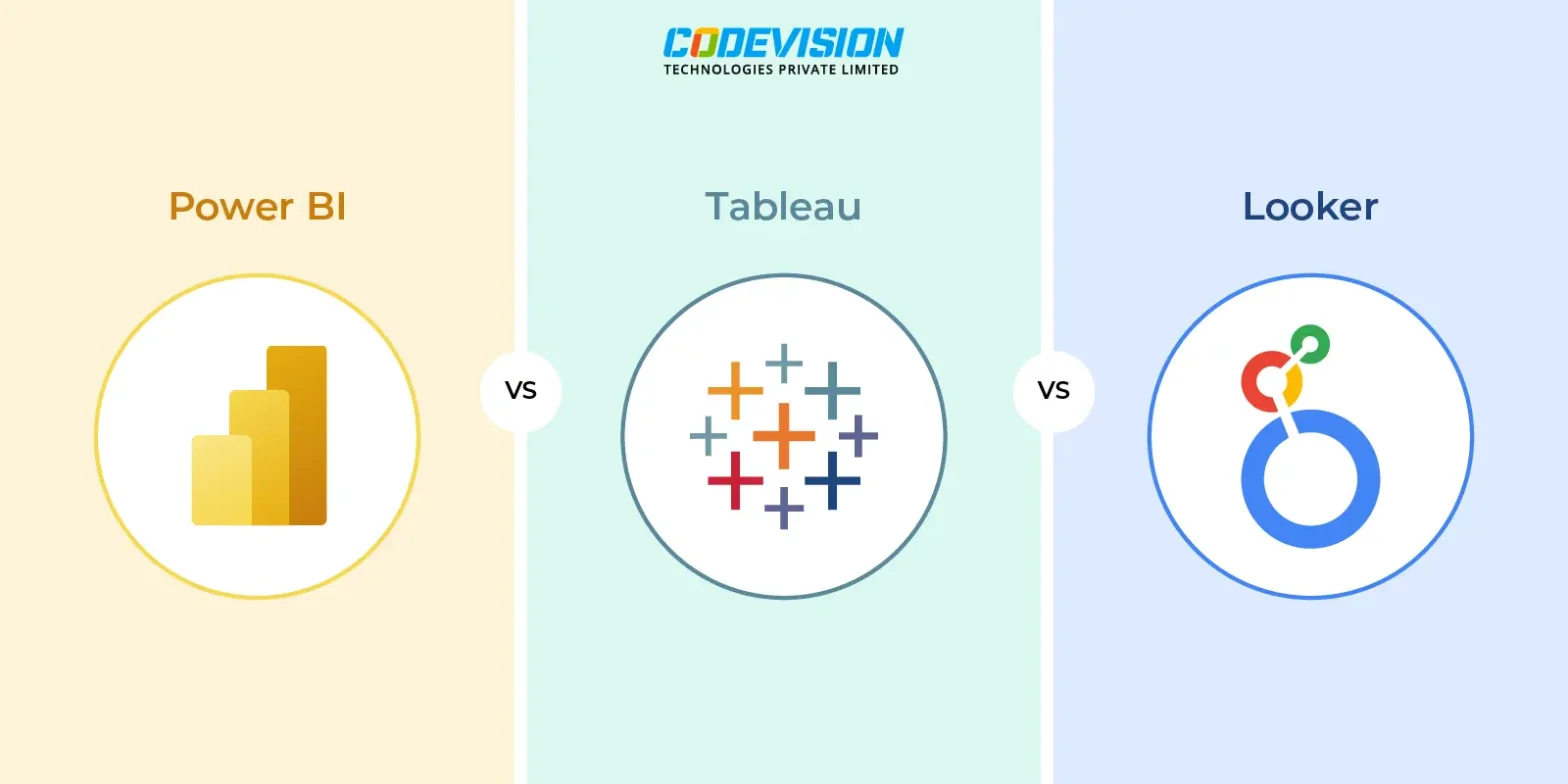Cloud Solution vs On-Premise Solution: Which is Best for Your Business Needs?

In today’s fast-paced business environment, agility, cost-efficiency, and scalability are basic needs. Whether you’re a growing startup or a well-established enterprise, choosing the right technology infrastructure plays a major role in how smoothly your business runs.
A key decision businesses must make today is whether to adopt cloud-based or on-premise solutions. While both approaches have their place, more and more businesses are moving to the cloud—and with good reason. In this blog, we’ll break down the differences and show why cloud solutions are becoming the go-to choice for companies that want to stay competitive, reduce costs, and scale with ease.
What Is a Cloud Solution?
A cloud solution delivers software, storage, or computing power over the internet—no need to install servers or manage infrastructure on-site. Platforms like Microsoft Azure handle the heavy lifting so your team can focus on growth, not maintenance.
What Is a On-Premise Solution?
On-premise systems require your business to buy, install, and maintain servers and software on-site. While this gives you complete control, it also means higher upfront costs, constant updates, and limited flexibility.
Cloud Solution vs. On-Premise Solution: At a Glance
| Feature/Aspect | Cloud Solutions | On-Premise Systems |
|---|---|---|
| Setup Time | Days or hours | Weeks or months |
| Access | Time-consuming, requires setup and documentation. | Quick setup with ready-made templates. |
| Security | Limited, often siloed. | 500+ connectors across Microsoft and third-party tools. |
| Scalability | Hard to replicate or adapt to new processes. | Easily scalable across teams and departments. |
| Upfront Cost | Complex, requires IT effort. | Cloud-based with regular updates and minimal downtime. |
| Maintenance | Lacks live triggers. | Real-time flows and conditional logic. |
| Disaster Recovery | High long-term cost (labour, time, tools). | More efficient and cost-effective in long-term. |
| Remote Work Readiness | Fully supported | Often limited |
Why the Cloud solution Is Leading Today

1. Cost-Efficiency Without Sacrificing Power
Cloud solutions shift you from capital expenditure (Capex) to operational expense (OpEx). You pay only for what you use—and scale as needed.
Real Use Case: A fast-growing logistics startup saved 60% on infrastructure costs by moving to Microsoft Azure. As new delivery hubs were added, the cloud adjusted instantly—no waiting for IT setups or buying new servers.
2. Remote Access = Business Continuity
Whether your team works in-office, hybrid, or fully remote, cloud tools make sure real-time access to data and systems—anytime, anywhere, from any device.
Real Use Case: During COVID-19, a mid-sized law firm using on-premise servers struggled to keep teams connected. After moving to Microsoft 365 and Azure, they stored all legal files to SharePoint, allowing secure access for lawyers working from home and during court visits.
Also Read: Azure Cloud Security Essentials 2025: What Every IT Leader Should Know
3. Built-In Disaster Recovery
Cloud providers offer geo-redundant backups, failover systems, and instant recovery. So even if your physical office goes down, your business doesn’t stop.
Real Use Case: A retail chain in South India lost a regional office in a flood. While on-premise systems were destroyed, their cloud-based POS and inventory data were restored within hours—keeping business running.
4. Future-Ready Technology
With cloud, you get immediate access to the latest features, AI integration, and powerful automation tools like Microsoft Power Platform. This gives your business a competitive edge without waiting for IT upgrades.
5. Faster Decision-Making with Real-Time Data
With cloud tools like Power BI, you can connect your Sales, Finance, and Operations data to see everything in one place—live. No more waiting for end-of-month reports.
Real Use Case: A manufacturing company used SharePoint and Power BI to monitor performance across four factory locations. Managers could spot slowdowns, adjust plans quickly, and cut delays—saving over $150,000 a year.
6. Easy, Seamless Collaboration
Cloud-based tools such as Microsoft Teams, SharePoint, and Outlook 365 work smoothly together. Employees can co-author documents, join video calls, or automate tasks with no IT handholding
7. Strong Security You Can Rely On
Concerned about data safety? Cloud providers like Microsoft spend billions on cybersecurity annually. You get access to tools like multi-factor authentication, threat detection, and compliance tracking—without hiring a security team.
8. Fast Setup. No More Waiting.
With cloud services, you can get started in hours—not weeks. It’s ideal for growing businesses or when you need to act fast. Opening a new office or adding new team members? Just add users—no hardware, no waiting around.
Still Need Control? Go Hybrid.
Some industries such as healthcare or finance require strict control over sensitive data. That’s where a hybrid model works well. Store sensitive data on-premise, and use the cloud for analytics, collaboration, or customer-facing tools.
How Codevision Technologies Can Help
At Codevision, we’ve many helped industries and businesses globally:
- Move from old systems to secure cloud environments
- Automate processes using Microsoft Power Automate
- Build scalable, no-code apps using Power Platform
- Set up hybrid cloud models that meet compliance needs
Whether you’re just starting your cloud journey or looking to scale smarter, We are here to help—with expert guidance, tailored solutions, and end-to-end support. Let’s build your future-ready cloud based infrastructure together.
Frequently Asked Questions
Cloud solutions are hosted on remote servers and accessed via internet, while on-premise solutions are hosted locally on a company’s servers. Cloud is known for scalability and flexibility, while on-premise provides more control but also requires higher maintenance.
Yes, in many cases. Cloud platform like Microsoft Azure offer enterprise-grade security such as multi-factor authentication, encryption, and compliance tools.
Companies are moving to the cloud for lower upfront costs, remote accessibility, real-time collaboration, and automatic updates. Cloud also offers built-in disaster recovery and faster deployment.
Cloud shifts you from CapEx (capital expense) to OpEx (operating expense). You only pay for what you use, avoid hardware costs, and reduce IT overhead—leading to long-term savings.
Absolutely. Cloud platforms like Microsoft 365 and Azure offer flexible, pay-as-you-go pricing. Small businesses benefit from enterprise tools without heavy infrastructure investments.
Cloud tools allows teams to work from any location, on any device. It offers Real-time access to files, apps, and data ensures smooth operations—even during disruptions like pandemics or natural disasters.
No. You still manage who accesses your data and how it’s used. With tools like role-based access, encryption, and audit logs, cloud platforms often offer more visibility and control than on-premise systems.
We are specializes in helping businesses migrate from legacy systems to secure cloud environments. Our team can handle everything from assessment and planning to execution and post-migration support.
Yes. We’ve worked with clients across logistics, legal, retail, manufacturing, healthcare, and many more. Our solutions are always tailored to meet your industry’s needs and also following compliance standards.

Why Every Manufacturing Business Needs Power BI for Scalable Growth




